1544 Search Results for link up
October 16, 2014
by Carole Zangari -

From Bielsko, Poland, to Denver, USA, we are continuing to share the Faces of AAC. Today, we meet SLP Gretchen Storm, who works in the public school system and has a private practice. Gretchen enjoys collaborating with parents, children, teachers, other healthcare providers, siblings and peers in strategies and facilitating communication through speech generating devices. In this post, Gretchen introduces us to Zach. :::::::::::::::::::::::::::::::::::::::::::::::::::::::::: Zach is an 11 year old who uses a Tobii I-12 eye gaze communication device to communicate. He previously used a switch scanning method on a VMax from Dynavox. Zach recently switched to an eye gaze device. Though he loves to use his arms and hands whenever possible, his motor control of them is not ideal for the consistent switch access needed for switch scanning. He was switched to an eye gaze system which could also serve as a switch scanning device if in the future he demonstrates improved... [Read More...]
October 14, 2014
by Carole Zangari -

Have you been hearing a lot about telepractice lately and are wondering how that works when the client has AAC needs? In this post, we turn to Nerissa Hall and Hillary Jellison of Communicare who tell us how they use it in their clinical practice. Nerissa and Hillary are both SLPs and assistive technology practitioners specializing in AAC, AT, and telepractice/tele-AAC. They have worked together for a number of years and are the proud owners of Commūnicāre, LLC, organization based in Western Mass and CT, that offers intervention, consultation, and evaluation services focusing on supporting an individuals, or a team’s, success and independence through implementation of AAC, AT and innovative and evidence-based practices. We are committed to our clinical work, as well as translational research and are members of the C.A.R.E. Consortium. Tele-AAC: A Powerful Way of Supporting Individuals Using AAC Telepractice, which is used to provide professional services by linking clinicians... [Read More...]
September 3, 2014
by Carole Zangari -
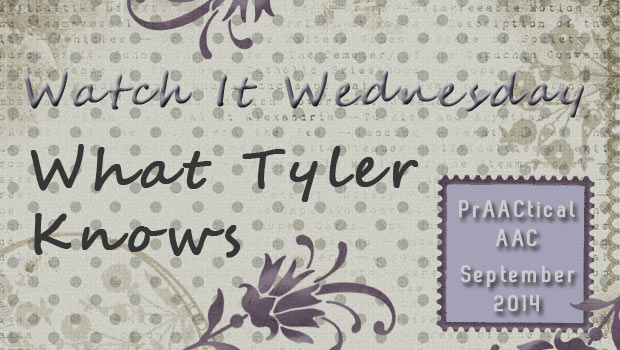
What does it take for a student to be included and challenged? Tyler seems to have some good ideas about this. Thanks to Pat Mervine for sharing his video. Direct Link to Video: https://www.youtube.com/watch?v=2jSwCnuWcQ0#t=37
August 28, 2014
by Carole Zangari -
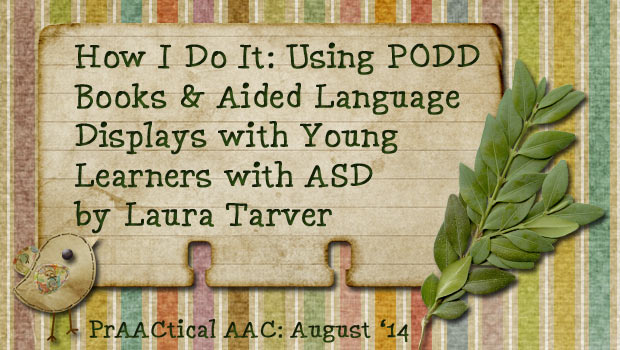
Today, we turn to the UK in a guest post by Laura Tarver. a London-based Speech and Language Therapist working with children with ASD and other complex needs. She previously worked in a primary school for children with ASD, where PODD and Aided Language Displays were introduced as part of a school wide approach in order to enhance the communication-friendly environment for all pupils. In this post, she shares how they used PODD books and aided language input to build the students’ communication skills. :::::::::::::::::::::::::::::::::::::::::::::::::::::::::::::::::: PODD (or Pragmatic Organisation Dynamic Display) communication books were developed in Australia by Gayle Porter, originally for children with cerebral palsy. As their use becomes more widespread throughout the world, practitioners are considering the benefits of using them with other clinical populations. Their structured organisation and emphasis on visual communication means that they are also a valuable tool for developing the communication of those with... [Read More...]
August 26, 2014
by Carole Zangari -
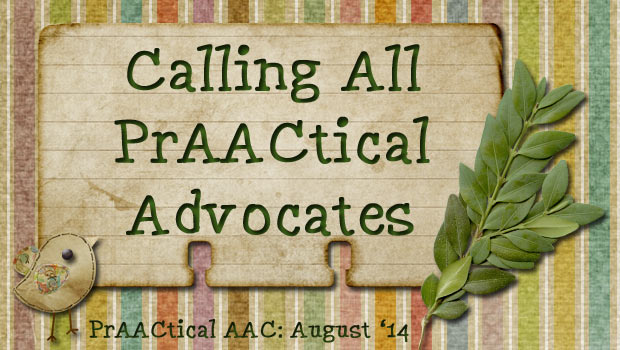
US Colleagues: It’s not too late! We still need your help to tell Congress and Health and Human Services Secretary Sylvia Burwell, to stop denying our most vulnerable disabled people their ability to communicate! The initial advocacy effort was effective in delaying the start date for implementation of the proposed changes but more needs to be done. New to these issues? Check out the post by Bill Binko here. Basically, Medicare has announced several changes to its speech generating device coverage policies that will be devastating to people with complex communication needs. To protect our clients, we believe the Secretary of Health and Human Services, the most senior official responsible for Medicare policy, must be made aware of the harmful effects of these changes and must be asked to reverse them. We must speak up now to ensure our clients also will be able to. You can call Medicare directly to... [Read More...]
August 24, 2014
by Carole Zangari -
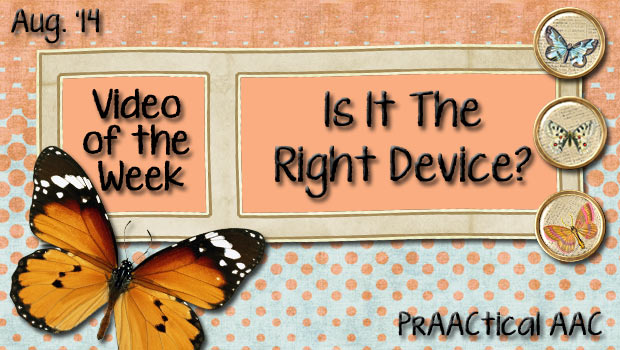
Today, we are excited to share this video tutorial by Dr. Rae Sonnenmier of the Institute on Disability at the University of New Hampshire on feature matching and considerations for selecting the right AAC device. Direct link to video: https://vimeo.com/91853443
August 17, 2014
by Carole Zangari -
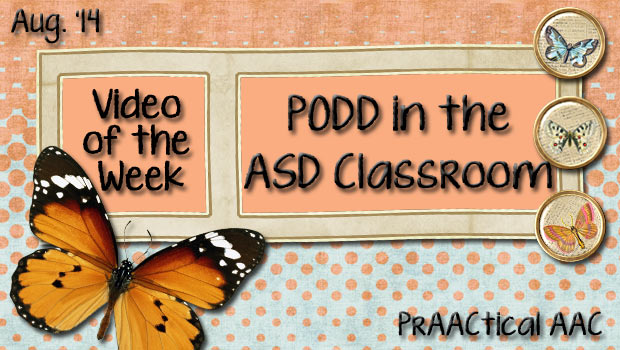
When something works, it’s worth sharing. This week, we travel to the UK, where SLP Laura Tarver gives a quick overview of using PODD books in a classroom of children with ASD at Eagle House Primary School. You can learn more about PODD here. Direct Link to Video:https://www.youtube.com/watch?v=shrO9jd73Pg
August 7, 2014
by Carole Zangari -
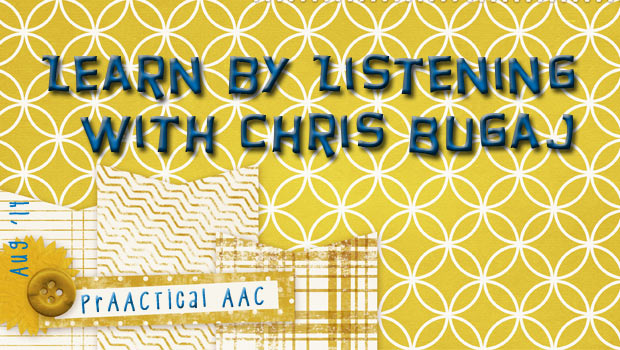
AAC professionals seem to love professional development. Unfortunately, there just never seems to be enough time to indulge our love for learning about new technologies and strategies. Sound familiar? Well, Chris Bugaj has been a solution worth listening to. Chris is an SLP and a founding member the Assistive Technology Team for Loudoun County Public Schools. He hosts The A.T.TIPSCAST , a multi‐award winning podcast featuring strategies useful in differentiating the learning experience. Chris is the co‐author of The Practical (and Fun) Guide to Assistive Technology in Public Schools and ATEval2Go, and has two chapters in Technology Tools for Students with Autism. Chris co‐produces and co‐authors the popular Night Light Stories podcast which features original stories for children of all ages. Today, we share his wonderful presentation (complete with hyperlinks) that will help us to learn how to use podcasts to learn while we’re driving, exercising, or just hanging out. If you’ve thought about maximizing your learning opportunities by listening... [Read More...]
August 6, 2014
by Carole Zangari -
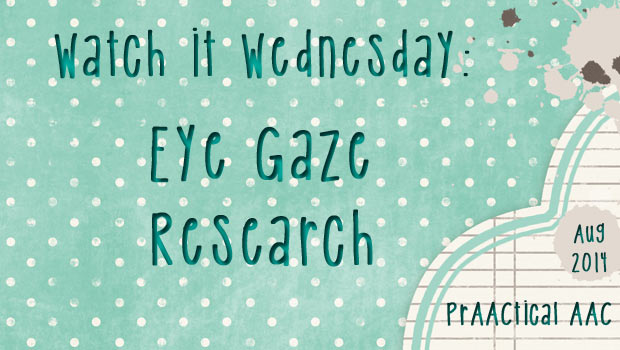
Today, we’ll take a look at a collaborative effort by researchers at University College London (Department of Developmental Science), Great Ormond Street Hospital for Children (Neurodisability Service), and Barnsley Hospital. These researchers are investigating the eye gaze patterns of children with cerebral palsy who have little or no functional speech. Could tracking eye movements be a useful way to assess language skills? This is a line of research we will be watching. Direct Link: http://www.ucl.ac.uk/gaze
August 3, 2014
by Carole Zangari -
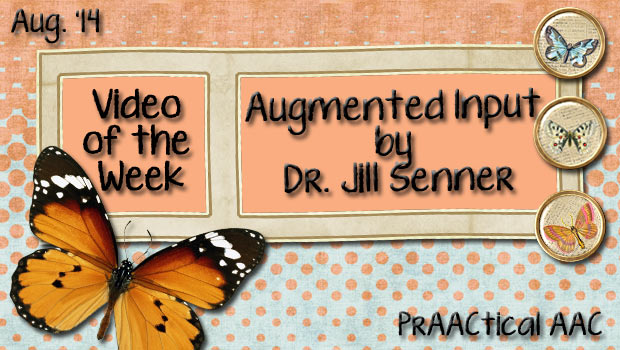
Work with learners who have difficulty processing language and are just learning to use their AAC systems? Dr. Jill Senner has a strategy for you! Thanks to DynaVox for hosting this terrific presentation. Direct link to video: http://www.dynavoxtech.com/training/toolkit/details.aspx?id=261









